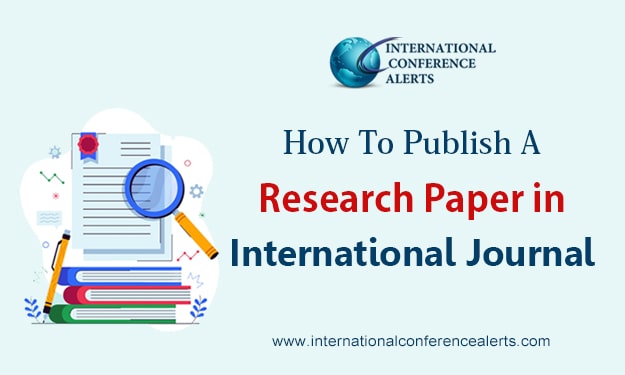What is a Research Journal?
A research journal is a written record used by researchers to document and track the progress of their academic investigations, observations, and findings. It serves as a personal repository for recording insights, data, hypotheses, methodologies, and conclusions related to a specific research topic.
The primary purpose of a research journal is to maintain a chronological and organized account of the research process. Researchers often use it to jot down initial ideas, outline research objectives, detail experimental procedures, and record unexpected observations. This practice not only helps in maintaining a clear timeline but also aids in ensuring the reproducibility and integrity of the research.
A well-maintained research journal serves several functions. It acts as a reference tool for future analysis, a platform for critical self-reflection and refinement of ideas, and a basis for sharing findings with peers through articles, presentations, and publications. Documenting setbacks, changes in direction, and the reasoning behind decisions also enhances the transparency of the research process.
How do you Write a Research Journal?
Writing an academic journal article involves a structured process to document and communicate your research findings. Begin with a clear title that reflects the topic. Write an abstract summarizing the study’s purpose, methods, results, and conclusions. Introduce the research problem, explaining its significance and relevance. Provide a literature review to showcase existing knowledge and gaps in the field.
Detail your research methodology, explaining how you collected and analyzed data. Present your findings objectively, using tables, graphs, and figures to enhance clarity. Interpret the results in the context of your research questions and hypothesis.
Discuss any limitations and potential biases in your study. Address ethical considerations and disclose funding sources if applicable. Conclude by summarizing the main findings, their implications, and potential avenues for future research.
Maintain a logical flow between sections and ensure your writing is concise, coherent, and grammatically correct. Revise and proofread meticulously to eliminate errors. Finally, keep the journal’s target audience in mind and adhere to the journal’s specific formatting and submission guidelines.
Difference Between Journal and Research Paper?
Journals and research papers are both essential forms of scholarly communication, but they serve distinct purposes in the academic world. A research paper is a written work that presents original findings, often based on empirical research, and contributes new knowledge to a specific field. It typically follows a structured format with sections like introduction, methodology, results, discussion, and conclusion. Research papers are usually submitted to conferences or journals for peer review and publication.
On the other hand, a journal refers to a periodical publication that collects and publishes a variety of research papers, articles, reviews, and other types of content within a specific subject area. Scopus Indexed Journals are platforms that enable researchers to share their work with a broader audience. They often consist of multiple research papers and other related content in a single issue, and they undergo an editorial review process before publication.
In summary, the main difference lies in their scope and purpose. A research paper is a standalone piece of work that presents original research findings, while a journal is a periodic publication that includes a collection of various research papers and articles within a specific domain, serving as a platform for sharing and disseminating scholarly work.
How do you Publish A Research Paper Immediately?
Publishing a research paper immediately requires careful planning and swift execution.
- Select a Reputable Journal: Identify a journal that aligns with your research’s scope and significance. Aim for well-regarded, peer-reviewed publications.
- Prepare Your Manuscript: Ensure your paper adheres to the journal’s guidelines for formatting, structure, and content. Proofread meticulously to eliminate errors.
- Concurrent Writing and Research: As you conduct your research, start writing sections of your paper simultaneously. This accelerates the writing process.
- Preprint Servers: Consider posting your paper on preprint servers like arXiv or bioRxiv. This allows you to share your findings before formal peer review.
- Quick Peer Review Journals: Some journals offer rapid peer review, expediting the process. Look for options that prioritize fast reviews.
- Engage Collaborators: Involve colleagues or mentors who can provide valuable feedback and assist with revisions, speeding up the refinement phase.
- Focused Review Responses: When addressing reviewer comments, respond promptly and concisely. Address all concerns directly and clearly.
- Professional Help: If feasible, enlist the help of professional editors to improve the paper’s language and presentation.
- Timely Submission: Submit your revised manuscript swiftly. Delaying submission prolongs the publishing timeline.
- Open Access Journals: Explore open access journals that prioritize rapid publication. While there might be fees, they can accelerate dissemination.
- Preparation for Publication: Have all supplementary materials (figures, tables, data) ready in the required formats before acceptance.
- Proofing and Corrections: Respond swiftly to the final proofreading and correction stages.
Remember, while speed is important, maintaining research integrity and quality is paramount. Rushing through steps might compromise the validity of your work. Balancing urgency with precision will help you publish your research paper promptly while upholding scholarly standards.
Step-by-Step Guide for Writing a Research Paper?
Writing a research paper can be a systematic and rewarding process when approached step-by-step. Here’s a concise guide that can help you through:
- Choose a Topic: Select a relevant and interesting topic that aligns with your interests and the assignment’s requirements.
- Research and Gather Information: Use reliable sources to gather information, take notes and organize them for easy reference.
- Thesis Statement: Craft a clear and concise thesis statement that presents the main argument of your paper.
- Outline: Create a structured outline that includes the introduction, body paragraphs, and conclusion. This helps maintain a logical flow.
- Introduction: Write an engaging introduction that provides context, introduces the thesis, and outlines the scope of your paper.
- Literature Review: Summarize and analyze existing research related to your topic to showcase your understanding of the subject.
- Methodology: Describe the research methods used, explaining how data was collected and analyzed.
- Body Paragraphs: Present your arguments in a structured manner. Each paragraph should have a clear topic sentence and supporting evidence.
- Citations: Properly cite all sources using a consistent citation style (APA, MLA, etc.) to avoid plagiarism.
- Analysis: Interpret the evidence you’ve presented, discussing its implications and how it supports your thesis.
- Counter Arguments: Address potential counter arguments and refute them logically, showcasing the strength of your position.
- Conclusion: Sum up your findings, restate the thesis, and discuss the broader implications of your research.
- References: Compile a list of all sources used in your paper, following the citation style guidelines.
- Proofreading and Editing: Review your paper for grammar, spelling, and clarity.
- Formatting: Ensure your paper adheres to formatting guidelines (font, spacing, margins) required by your institution.
- Title and Abstract: Create an informative title and a concise abstract that summarizes your paper’s main points.
- Final Review: Read through your paper one last time to catch any remaining errors or inconsistencies.
By following these steps, you can systematically approach the task of writing a research paper, ensuring it’s well-organized, and effectively communicating your ideas and findings.
Benefits of Publishing a Research Paper?
Publishing a research paper offers numerous benefits. Firstly, it contributes to the advancement of knowledge by sharing new findings and insights with the academic community. It establishes the credibility and expertise of the authors, enhancing their reputation and career prospects. Published papers are often cited by others, leading to collaborations and further recognition.
Moreover, fast-track publication journals showcase the ability to conduct rigorous research, bolstering academic and professional credentials. It facilitates feedback from peers, helping to refine and improve the research. Publishing also satisfies funding agencies and institutions, showcasing their investments in research. Additionally, sharing findings aids in addressing real-world issues, influencing policies, and driving innovation. Overall, research paper publication promotes intellectual growth, fosters a sense of contribution to the field, and opens doors to networking and future opportunities.

